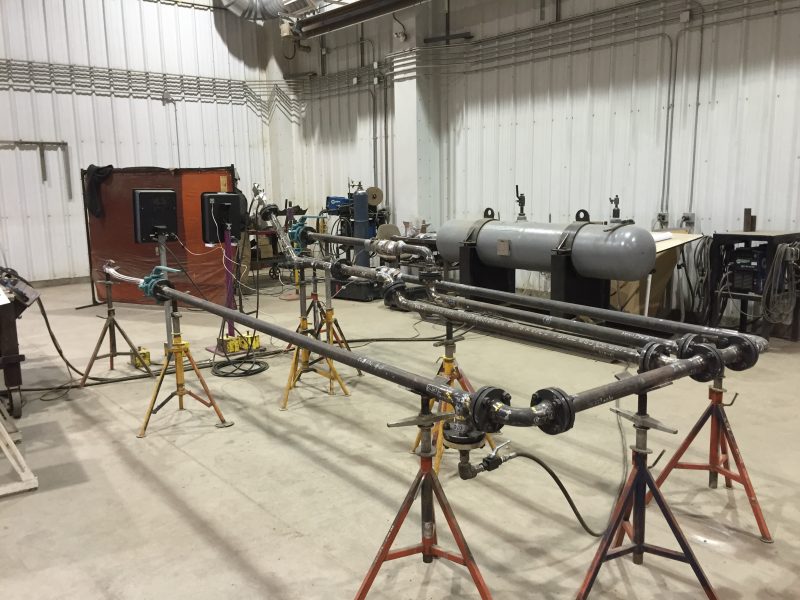If you’re in the industry, you’ve probably heard of Hydrostatic Weld Testing (HWT). However, you may be confused as to what this method is, and whether or not it’s equivalent to radiography or ultrasonic inspection. The short answer is that it’s a type of pressure test that removes stress corrosion cracks. The process is also mandated by the Department of Transportation (DOT). Vital-Tools has come up with sustainable tools to increase your production.
Hydrostatic weld testing is a type of pressure test
One of these advantages is its safety. While a pneumatic pressure test is dangerous, it is useful when water is not compatible with the pipeline. During hydrostatic weld testing, the water in the vessel is filled to a specific level and helium is sprayed on the leak.
A hydrostatic test is the safest type of pressure test. It is the least hazardous type of testing and generates less stored energy. Most codes and standards prefer hydrostatic testing to other pressure tests. However, there are some situations in which hydrostatic testing is not suitable.
Another type of pressure test is hydrostatic testing. This is an important process that evaluates the structural integrity of pressure-containing infrastructures. It involves filling the component with water and eliminating air. Contact Vital-Tool to get tools at affordable prices, we are one of the growing companies at present.
It is not interchangeable with radiography or ultrasonic inspection
There are many ways to test welds, including radiography and ultrasound. Radiographic testing uses X-rays or other radioactive isotopes to view the internal structures of a weld. It is more rapid than ultrasonic testing, but it has many drawbacks. First, it is a costly, time-consuming process that requires a large amount of space and qualified personnel. Second, the radiation used to conduct this test is highly hazardous and requires special precautions and safety measures.
Hydrostatic testing is an excellent method for detecting leaks, determining weld quality, and verifying the performance and durability of a piping system. Unlike radiography and ultrasound inspections, hydrostatic tests do not require the use of radiographic or ultrasonic equipment, but they are useful in certain situations.
While pipeline hydrostatic testing does not have the disadvantages of radiography or ultrasonic inspection, it is not as effective as ultrasonic testing in detecting flaws in welded components. While ultrasonic testing has many advantages over radiography, it is not an ideal solution for all cases. Ultrasonic testing also uses more advanced tools that require high operator training. However, it is not as accurate as ultrasonic inspection because the SBD database contains more defects than GDXray.
Conventional ultrasonic testing has several limitations. The most common limitation of UT is its fixed parameters, including the depth of inspection and the incidence angle of the ultrasonic signal. This limitation severely limits the flaw detection capacity. However, PAUT uses multiple elements that pulse independently, thus enhancing the detection and quality of flaws in components. So, despite the disadvantages of PAUT, the benefits of this method outweigh the disadvantages.
It removes stress corrosion cracks
Hydrostatic weld testing can remove stress corrosion cracks from pipelines. Hydrostatic testing is effective in removing these cracks when the critical crack size is larger than the size of the failure flaw at the hydro test pressure.
The process of hydrostatic testing is a complex process. The tester must be sure that his or her practices do not cause any problems. A TEAM tool can accommodate pipe sizes from 0.5” to 120” and test pressures up to 5,000 psi. Its flexibility and ease of use make it an excellent choice for testing pipelines. The pipeline integrity threat posed by stress corrosion cracks is serious. As a result, the pipeline industry has undertaken a comprehensive research program to determine the causes of SCC and methods of preventing them. In this paper, we discuss recent discoveries that have directly impacted the mitigation of the SCC threat. We discuss the classical and high-pH forms of SCC and their stages.
Author bio:
Hello, I am a professional SEO Expert & Write for us technology blog and submit a guest posts on different platforms- we provides a good opportunity for content writers to submit guest posts on our website. We frequently highlight and tend to showcase guests.







